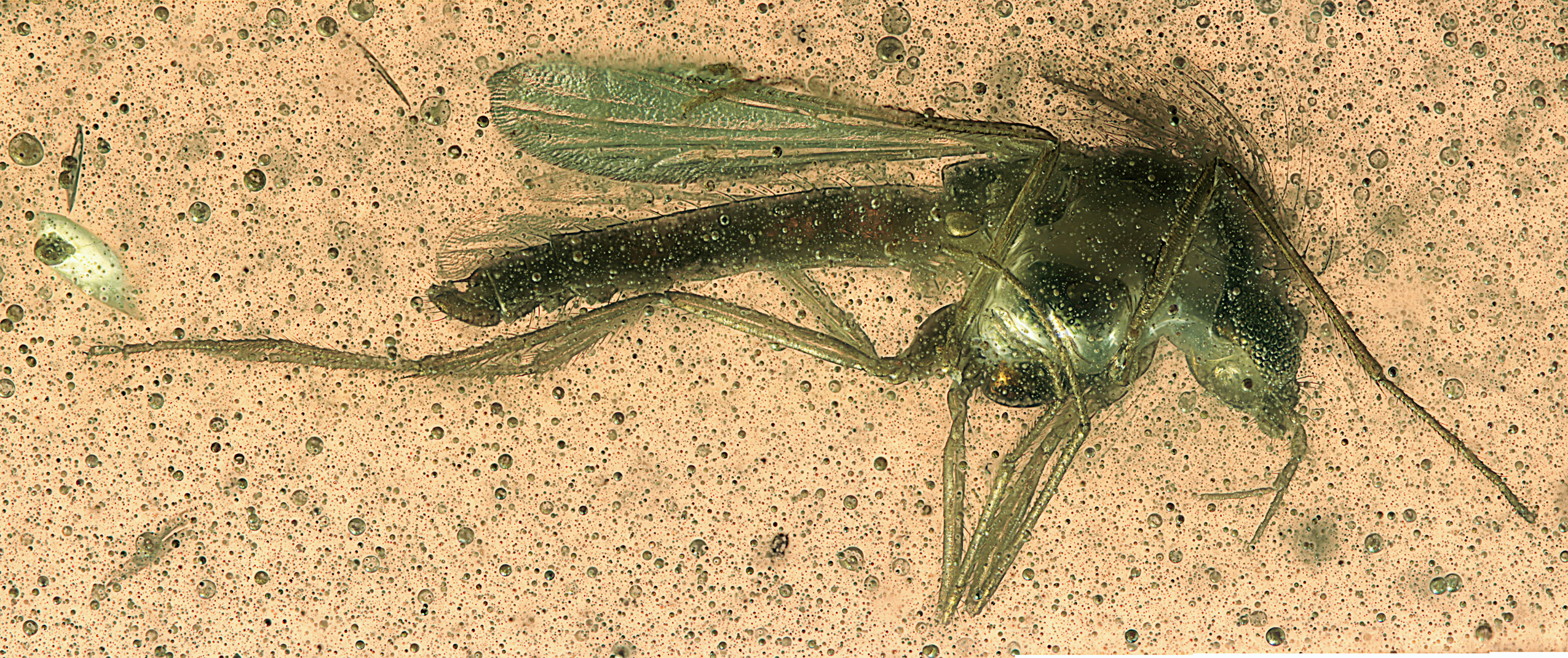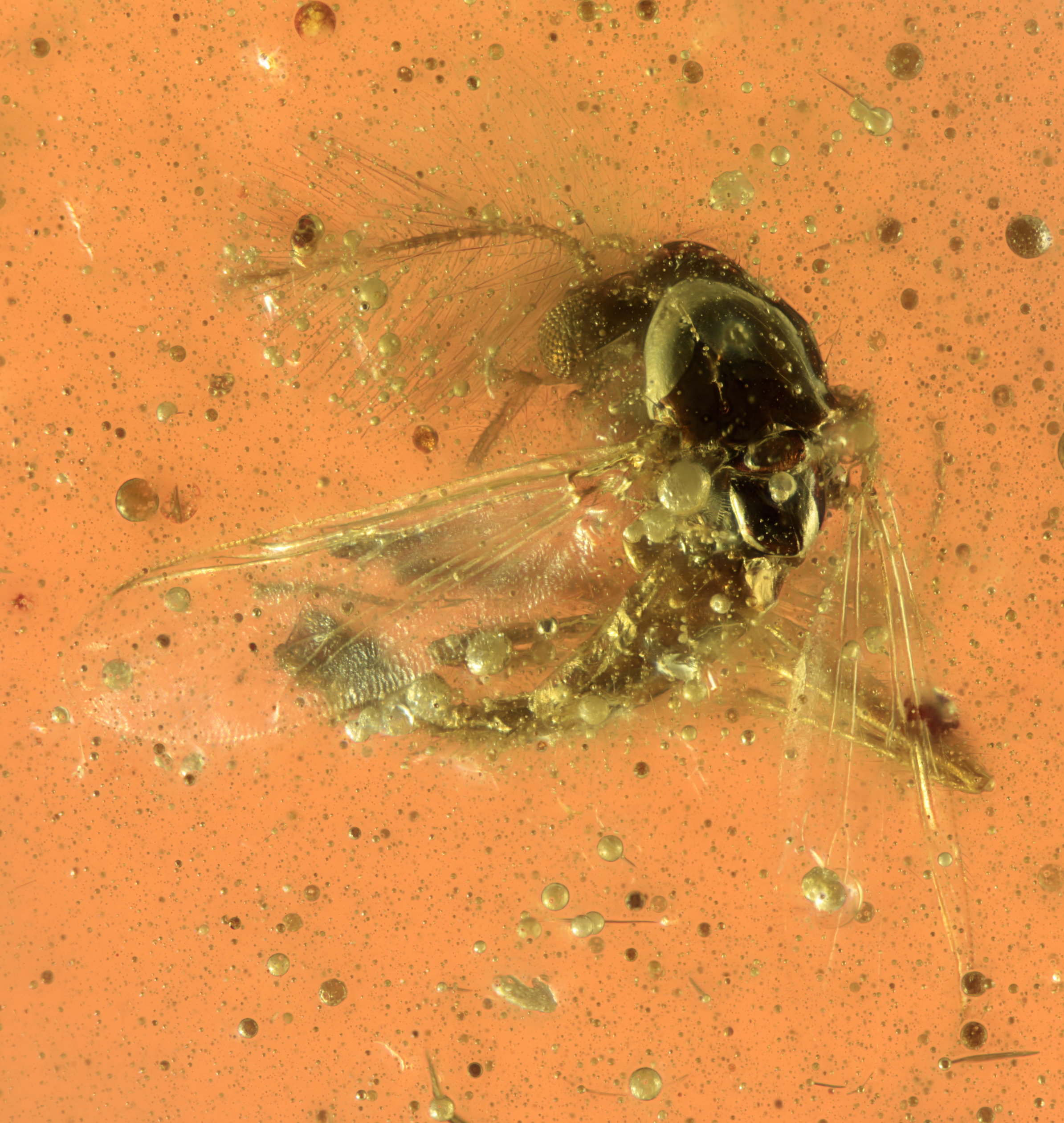Insectos acuáticos hallados en ámbar podrían revelar nuevas claves sobre la extinción de fauna de agua dulce
La investigación ha estado liderada desde la Estación Biológica de Doñana – CSIC y ha contado con la participación de distintas instituciones de Nueva Zelanda y Alemania

Uno de los especímenes hallado en el ámbar de hace 26 millones de años de la formación Pomahaka, en el sur de Nueva Zelanda. Foto: Viktor Baranov
Un equipo científico internacional liderado desde la Estación Biológica de Doñana - CSIC ha identificado los primeros fósiles en ámbar de la familia de insectos Chironomidae (mosquitos que no pican) en Nueva Zelanda. Estos registros proceden del Oligoceno tardío, de hace aproximadamente 26 millones de años. Durante esta época, el antiguo continente de Zelandia estuvo en su mayor parte sumergido bajo el mar, por lo que existen muy pocos registros fósiles en ámbar. El estudio, publicado en la revista PeerJ, ha permitido proporcionar una nueva perspectiva sobre la biogeografía y los ecosistemas pasados de esta región.
En concreto, el análisis de trece especímenes de Chironomidae hallados en el ámbar de la formación de Pomahaka, ha revelado la presencia de insectos de la subfamilia Orthocladiinae Kieffer. Entre los hallazgos más relevantes destaca la identificación de Bryophaenocladius zealandiae, la primera especie fósil de este género descubierta en el hemisferio sur, que ya no está presente en la fauna actual de Nueva Zelanda pero que puede que se encuentre en las remotas islas subantárticas de Auckland. Una segunda especie encontrada, Pterosis extinctus, supone el primer registro fósil del género existente Pterosis, hoy representado por una única especie endémica en las islas de Auckland y la isla Cambell. Además, el equipo científico ha encontrado en el ámbar especímenes incompletos correspondientes a los morfotipos de Bryophaenocladius y Metriocnemini.
"Dado que el país cuenta con pocos fósiles de este período, estos hallazgos son clave para comprender la historia de Nueva Zelanda como una región biogeográfica única", explica Viktor Baranov, investigador de la Estación Biológica de Doñana y primer autor del estudio. Estos nuevos fósiles pertenecen a animales que requieren hábitats terrestres o semiacuáticos para su desarrollo larvario, lo cual apoya la teoría de la existencia hace 25 millones de años de un ambiente de bosque pantanoso húmedo en el sur de Nueva Zelanda.
Extinción y vulnerabilidad de la fauna de agua dulce
Más allá del impacto científico, estos hallazgos tienen implicaciones medioambientales significativas. La desaparición en una región de todo un género de insectos acuáticos, que está ampliamente distribuido en el mundo, resalta la vulnerabilidad de la fauna de agua dulce a los cambios ambientales.
"Curiosamente, estos dos géneros que hemos descubierto en el ámbar de Pomahaka, están en la actualidad ausentes de la fauna de las islas principales de Nueva Zelanda, pero ambos aún sobreviven en las islas de Auckland Island y Motu Maha, situadas hacia el sur”, señala Baranov. “Esto abre una nueva vía para estudiar los procesos de extinción y colonización de insectos acuáticos en el pasado”.
Comprender los mecanismos de extinción de estos organismos es crucial, ya que los organismos de agua dulce son el grupo más amenazado por la actual crisis de biodiversidad. “Teniendo en cuenta el gran valor económico, recreativo e intrínseco de los animales que viven en agua dulce, comprender y detener su extinción tiene un gran valor social”, concluye el investigador.
El estudio ha sido desarrollado en colaboración con el Estación Biológica de Doñana - CSIC (España), el Institute of Materials Research del Helmholtz Centre (Alemania), la Universidad de Otago (Nueva Zelanda) y la Universidad de Göttingen (Alemania).
Referencia:
Viktor Baranov, Joerg U. Hammel, Daphne E Lee, Alexander R Schmidt, Uwe Kaulfuss Extending the fossil record of late Oligocene non-biting midges (Chironomidae, Diptera) of New Zealand, PeerJ. https:// doi.org/10.7717/peerj.18893

